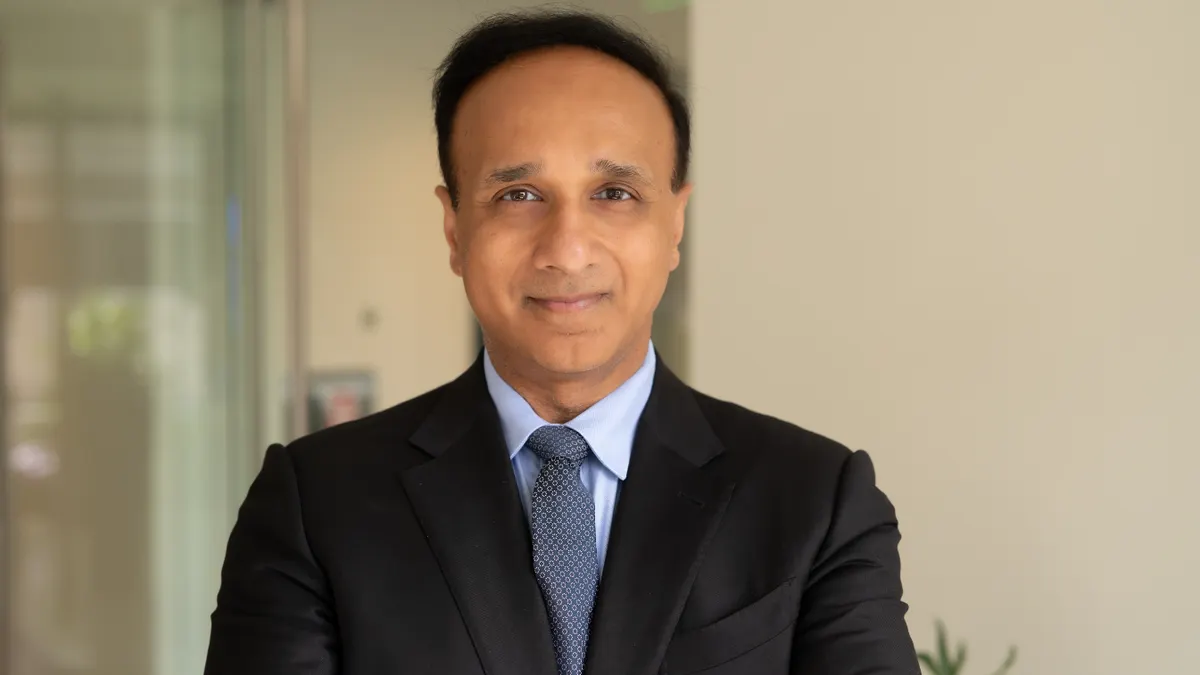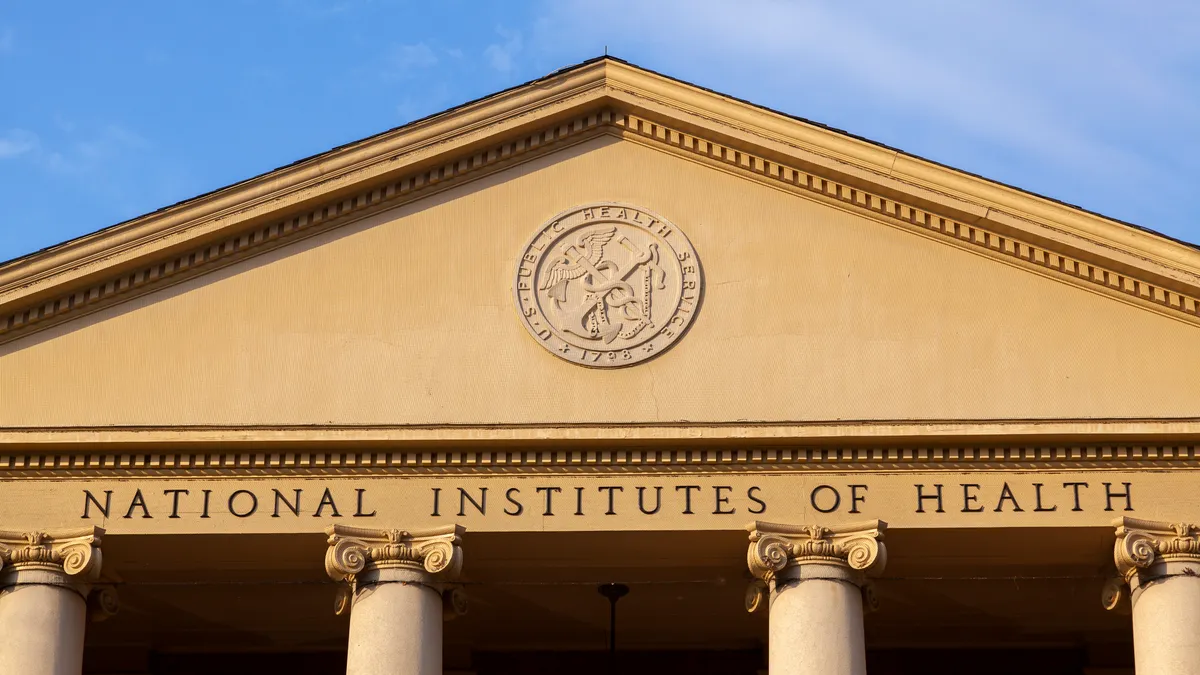Dr. Mathai Mammen knows the bar is high for a biotech bringing new drugs to the market. But to stand out among the crowd, the former head of R&D at Johnson & Johnson is steering his current company Parabilis Medicines toward not just difficult biological targets, but those once deemed “undruggable.”
The effort reflects what Mammen has seen over a decades-long career from biotech startups to Big Pharma and back — that differentiation and durability are the key to making it through the gauntlet of tough financial times and fierce competition.
Mammen began his career as co-founder of Theravance, a company that brought five medications to market during his tenure, before leading several disease areas at Merck & Co. and serving as R&D leader at J&J, where he oversaw approvals of blockbusters like Tremfya and Darzalex Faspro.
With that experience in tow, Mammen recognizes that a slew of biotechs now suffer from a “me-too” problem, joining the fray in pursuit of common targets. As CEO, president and chairman of Parabilis, he’s trying to take biotech back to the drawing board using AI-based prediction and a highly adaptable platform to tackle difficult pathways that haven’t been addressed before.
Founded in 2015 as FogPharma, the biotech changed its name to Parabilis last year. The company’s lead candidate in phase 1/2 trials inhibits the protein beta-catenin:TCF, which plays a role in many types of cancer, including colorectal — no other therapy has successfully targeted the pathway. Parabilis also has earlier-stage programs targeting drivers of prostate cancer that Mammen said look promising.
"What distinguishes good drug hunters from the rest is being able to connect the dots in a unique way."

Dr. Mathai Mammen
CEO, president, chairman, Parabilis Medicines
Addressing new targets once considered beyond medicine’s capabilities captures an unmet medical need and lets a company lead the sector in a new direction, standing out as a pioneer, Mammen said.
“You should develop your medicine in a unique and effective way that also will be very difficult for others to follow,” Mammen said. “If you pay attention to that and build a culture and a team that knows how to execute and tackle new problems from scratch — combining experience and novel thinking — you’ll have a good company.”
Here, we spoke to Mammen about the state of the biopharma industry, how a tight funding environment could allow certain companies to stand out and why “undruggable” targets offer a window of opportunity for those willing to leap into the unknown.
This interview has been edited for brevity and style.
PHARMAVOICE: From your perspective, what is the state of the pharma industry right now?
DR. MATHAI MAMMEN: Big picture, my perspective begins in 1997, and I’ve seen this industry go up and down — and up and down again. There have been multiple cycles, and I compare our current state to that of the late 90s when we were funding Theravance with an A round of $5 million and a B round of $20 million. Those numbers were a lot smaller than they are now, even in this downturn, so I think there’s plenty of money for good ideas. But what’s happened, especially since 2020, is there has been a proliferation of companies and generalist money — dare I say too many companies, with a dilution of effort. There are only so many good ideas worth pursuing, and so we’re seeing a contraction.
Still, the efficiency of making a medicine is higher because many of the old challenges have been solved. Now, everyone indexes a few things like the ‘most favored nation’ policy or the Inflation Reduction Act, but they sometimes forget there are many things that are extremely favorable right now that outweigh those specific challenges.
With more money in the system and less efficient use of it, where is the wasteful spending right now?
I wouldn’t characterize it as a waste, but there might be many shots on goal for programs that might not make the most important medicine. Eight or 10 companies might be working on something very similar that may even yield good data, but perhaps only one or two are going to make a difference in the market. The outcome is not as independently valuable anymore, because there might not be a buyer.
Another aspect that’s not wasteful necessarily but just damn hard is understanding biology well enough to predict for a novel mechanism. We still have high failure rates because we don’t understand the relationship between a piece of biology and the disease we’re trying to modify. These are very hard problems that are very hard to solve, and the industry is spending efforts along very narrow axes. The problem is too much focus on incremental innovation.
What is fundamentally most important for a biotech when funding is tough to come by?
You need to have confidence that your biology can translate. What distinguishes good drug hunters from the rest is being able to connect the dots in a unique way. You need to have a differentiated medicine — otherwise you’ll get to the end and not have value.
You also need to find a reason that your differentiation is durable. Today, with the volume of innovation from certain regions like China, if you’re building a small molecule or an antibody, engineering is good enough now that others can quickly follow such molecules. The idea itself should be contrarian, to maintain that differentiation over time. At Parabilis, the modality is so challenging to wield that very few people know how to wield it.
You said last year that you want to “break boundaries and crush dogma.” What are the boundaries and dogmas you think are holding biotech back that Parabilis can overcome?
A big one through my career at Theravance, Merck and J&J is that many of the projects or biological targets you might imagine working on, where you’ve gained conviction through genetics or certain phenotypic methods, need to be put to the side because most of it is not actionable given the tools we have. Our toolsets don’t allow us to go after certain kinds of targets. I used to say, ‘Oh, well, there are some targets like that. Too bad.’
Some proteins seem ‘undruggable’ — they have smooth surfaces without cavities to support a small molecule. But what we’ve created at Parabilis are special peptides called ‘Helicons’ that aren’t constrained to one shape and contain thousands of amino acids to bring the full diversity of small molecules to a peptide backbone. That’s a phenomenal opportunity to address interesting pieces of biology that are otherwise not actionable.
What’s the business appeal of aiming at a target that was previously considered “undruggable”?
I’m cautious using that term — some situations seem undruggable, but they just haven’t been drugged yet. The business value, of course, is that you can take on targets no one else can take on, and you can go all the way to clinical proof of concept and beyond. As a business, that’s a big barrier to entry, a wide moat to cross. But it gives a durable advantage to a company, especially in a day and age when there’s a high volume of innovation. In this ‘undruggability’ space, if we’re able to uniquely drug the interface between beta catenin and TCF, for example, that’s a huge deal, and the business advantage is in that durable differentiation.




















